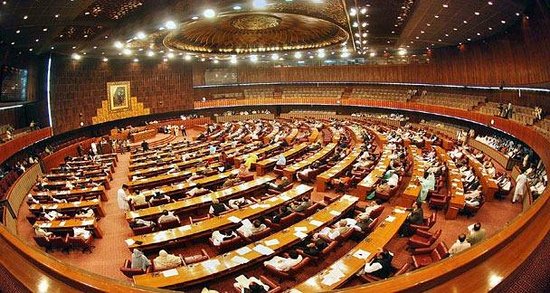 By Amjad Mehmood
By Amjad Mehmood
Prime Minister Shehbaz Sharif in his media talks shared that the International Monetary Fund (IMF) is reviewing the complete economic structure of Pakistan and demanded to take stringent measures before finalizing a deal to lend pending $1.1 billion. The IMF also asked Pakistan to withdraw subsidies, increase energy tariffs, extra revenues, and arrange more financing from external sources. In the same context, Prime Minister Sharif announced an austerity drive to save about Rs. 200 billion per annum which includes cuts on ministers’ salaries and allied facilities including business class air tickets, luxury cars, and security escorts. According to the announcement, the austerity drive also includes a 15% cut in the salaries of the parliamentarians and 25% reduction in the executive allowance of government servants. Though, it does not include any cuts in the gigantic size of cabinet. The Government also asked the armed forces to reduce their non-combat expenses and the judiciary to rationalize perks, privileges, and pensions of in-service & retired judges and other judicial staff.
On the other hand, the PML (N) led coalition government has the largest-ever cabinet size in the history of Pakistan. According to official website of National Assembly of Pakistan, there are 121 cabinet members including federal ministers, ministers of state, advisors, special assistants, and parliamentary secretaries. The dilemma with coalition governments remains similar where governments always try to please the political allies rather than following the constitution. The 18th Amendment to the constitution of Pakistan limits the cabinet size to 11% of the total membership of both houses of parliament which rounds down to 49 considering the total number of the National Assembly and Senate of Pakistan’s seats.
Regardless of the legal limit on cabinet strength, the government is continuously adding more members to the cabinet to keep the knot tight with political allies which undoubtedly cost very high to the national exchequer as the minister and equivalent position’s salaries and perks are beyond imagination. Previously, the PPP-led coalition government under the premiership of Mr. Yousaf Raza Gilani was the record holder with a 66-member Cabinet. Former prime minister, Imran Khan criticized the extraordinary size of the cabinet being in opposition but he too failed to limit his cabinet size according to constitutional demarcation. Historically, PML-Q, PPP, PML-N, and PTI governments in the last 20 years have exceeded the limit and have no moral authority to criticize this violation of the rule.
Under the Pakistan Democratic Movement (PDM), a coalition government with ever-low reserves in the history of Pakistan and on the verge of economic default is being run by 121-member cabinet. Comparatively, the United Kingdom (UK) has $101.59 billion in foreign reserves and there are only 22 Cabinet positions in the government. A country that has over 600 MPs always keeps the cabinet members under the 30 mark. While India with $575.3 billion in reserves and government has 31 Cabinet Ministers, 2 Ministers of State (Independent Charge), and 47 Ministers of State where a legal limit is restricted to 81 members (15% of the total number of Lok Sabha MPs). Bangladesh reserves touch $46.17 billion, and the government is comprised of 25 cabinet ministers, 7 advisers, 18 state ministers, and 3 deputy ministers under the leadership of the Prime Minister.
The government is undoubtedly struggling on all fronts mainly in controlling the teetering economic situation and devaluation of the Pakistani rupee. Friendly states are also in a dubiety situation to further lend the money while the IMF has already twisted government’s arms before making any further deals. In such a situation adding more ministers or SAPMs to unnecessarily swell the cabinet size is beyond understanding. There are cabinet members. a federal minister like Javed Latif and 23 special advisors without holding any portfolios.
Prime Minister Shehbaz Sharif is utterly required to cut the cabinet size before expecting any government organization to remain helpful in his recently launched austerity drive. The government can better judge from where to start downsizing cabinet size however, they may start immediately by relieving the services of Mr. Muhammad Jehanzeb Khan who is made Minister of State for ‘Government Effectiveness’. This would register government’s seriousness towards curtailing useless expenses.



